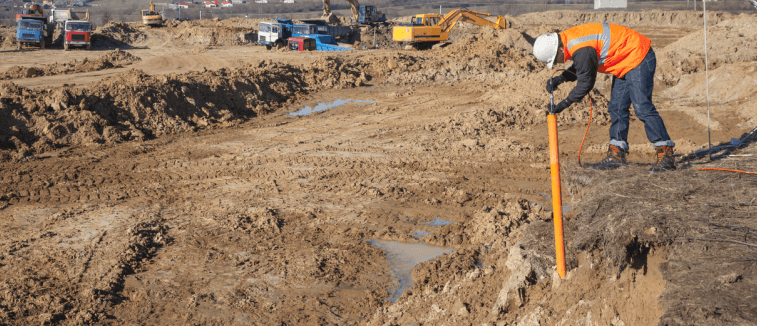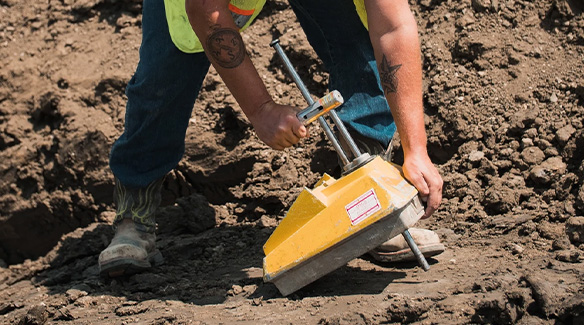The Interdisciplinary Approaches in the Geotechnical Market: Bridging the Void In Between Engineering, Geology, and Environmental Scientific Research for Optimum Project Results
The assimilation of design, geology, and ecological science within the geotechnical market is not just helpful; it is vital for achieving optimal job outcomes. This interdisciplinary collaboration cultivates a detailed understanding of facility website conditions, enabling ingenious options to emerge. By taking a look at crucial roles and effective study, we can discover the vibrant interaction that drives job success. Nonetheless, difficulties remain in properly managing these multidisciplinary initiatives, elevating inquiries concerning future patterns and prospective developments. What approaches might arise to promote this vital collaboration and enhance the efficacy of geotechnical practices?
Relevance of Interdisciplinary Partnership
The value of interdisciplinary partnership in the geotechnical market can not be overstated. Reliable geotechnical jobs need the integration of varied experience from various areas, consisting of engineering, geology, and environmental science. This cooperation makes sure that all elements of a task are thought about, causing comprehensive options that deal with complicated challenges.
When functioning in isolation,Interdisciplinary collaboration fosters technology by enabling experts to share insights and approaches that might not be apparent. By leveraging the staminas of several techniques, teams can determine prospective dangers, maximize layout processes, and improve the sustainability of geotechnical projects. Additionally, such cooperation promotes an all natural understanding of site-specific problems, which is vital for accurate assessment and decision-making.
The complexity of geotechnical tasks demands a worked with method to problem-solving. Eventually, interdisciplinary cooperation is vital for advancing finest practices and achieving quality in the geotechnical sector.
Secret Roles of Each Technique
Partnership amongst different self-controls is not just helpful; it is vital for the effective implementation of geotechnical projects. Each self-control-- engineering, geology, and environmental scientific research-- plays an unique yet interconnected role that contributes to forecast efficiency and sustainability.
Geotechnical designers are mainly in charge of creating structures and making sure architectural stability. They analyze dirt and rock residential properties to assess load-bearing capabilities, giving crucial data for safe construction methods. Their know-how makes it possible for the formula of ingenious options to complex challenges.

Ecological researchers assess the possible effects of building and construction on environments and water sources. They carry out ecological analyses and establish reduction methods to reduce negative results. By incorporating eco-friendly considerations, they ensure conformity with laws and promote sustainability throughout the task lifecycle.
Instance Research Studies of Effective Integration
Successful combination of geotechnical self-controls can be exhibited via different study that highlight the efficiency of team effort in dealing with complicated engineering challenges. One notable example is the building of the Hong Kong-- Zhuhai-- Macau Bridge, where a joint technique entailing geotechnical engineering, geology, and ecological science was essential. Rock hounds and engineers functioned in unison to assess the seabed problems and optimize the structure design, guaranteeing security and minimizing ecological impact.
An additional impactful case is the renovation of incline security in the San Francisco Bay Area, where an interdisciplinary team integrated geotechnical evaluation with ecological analyses. By integrating geological studies and hydrological researches, the team efficiently identified possible landslide risks and implemented effective mitigation steps, improving security and sustainability.
Additionally, the redevelopment of Brownfield sites typically requires a multidisciplinary technique. In one situation in Chicago, partnership among geotechnical engineers, environmental researchers, and metropolitan planners more helpful hints resulted in the effective remediation of polluted dirt, permitting the secure transformation of the site into a community park. These case research studies illustrate that interdisciplinary cooperation not just addresses technical obstacles but likewise promotes ingenious options that benefit both neighborhoods and tasks.
Challenges in Multidisciplinary Projects

Additionally, collaborating timetables and process amongst various groups can be bothersome, particularly when each self-control has special job milestones and deliverables. This misalignment can cause delays and raised prices. The challenge of resource allocation also looms huge; guaranteeing that specialized competence is readily available at essential points requires mindful planning and insight.
Finally, governing compliance postures one more considerable difficulty. Each self-control might encounter various regulative structures, and lining up these requirements to satisfy project purposes can be intricate and time-consuming. Addressing these obstacles demands solid leadership and efficient interaction techniques to promote collaboration and make certain that multidisciplinary teams function cohesively towards shared goals.
Future Trends in Geotechnical Practices
As a knockout post the geotechnical sector develops, emerging fads are improving methods to attend to the difficulties faced in multidisciplinary projects - tailings engineer. One substantial fad is the enhanced integration of innovative technologies, such as synthetic knowledge and artificial intelligence, into geotechnical evaluation and style. These modern technologies boost anticipating modeling and threat evaluation, enabling engineers to make even more enlightened choices throughout the job lifecycle

Additionally, the fostering of digital doubles and real-time monitoring systems is coming to be much more common. These devices promote ongoing evaluation of soil conditions and structural performance, enabling prompt treatments when problems arise.
Verdict
To conclude, the combination of design, geology, and ecological scientific research is important for accomplishing ideal end results in the my explanation geotechnical market. Interdisciplinary partnership cultivates development, boosts analytical capacities, and aligns technical needs with environmental sustainability. Effective study show the benefits of this strategy, while recognizing the challenges faced in multidisciplinary jobs. Looking ahead, welcoming these joint methods will certainly be necessary for browsing future fads and progressing the field of geotechnical engineering.
The integration of design, geology, and environmental science within the geotechnical market is not merely advantageous; it is imperative for achieving optimal job results. Efficient geotechnical jobs call for the integration of varied proficiency from different fields, consisting of design, geology, and ecological science.Navigating the complexities of multidisciplinary jobs in the geotechnical market provides a number of substantial obstacles.As the geotechnical market develops, emerging trends are improving techniques to address the obstacles dealt with in multidisciplinary tasks. Geotechnical engineers are progressively working together with ecological researchers to ensure that tasks line up with sustainability objectives and comply with regulatory needs.